From Ragnar Lothbrook and Erik the Red to Leif Erikson and Cnut the Great, these famous Vikings are recognized as the fiercest warriors in our history and they still capture the imagination worldwide.
While many common perceptions about Vikings – such as horned helmets – are fantasy, the reality of their deep and complex religious beliefs, maritime and military accomplishments, and impact on the culture and history of Europe make them endlessly fascinating.
Table of Contents
Ragnar Lothbrok

Hands down, there is no more famous Viking warrior in the modern consciousness than Ragnar Lothbrok. Popularized by the History Channel series Vikings, the legendary Ragnar is a somewhat contentious figure beset by contradictory stories and strong speculations about his historical basis.
His supposed exploits range from the plausible (Viking raids in England and France) to the mythic (battling a giant serpent). Yet some glimmers of historical fact can be sorted out of the legends.
The Real Ragnar
It is known from Anglo-Saxon accounts that a particularly successful Viking raider referred to as Ragnall or Reginherus was documented around 840 C.E. This warlord was ultimately ceded land by France’s Charles the Bald in return for peace.
Ragnar didn’t honor this agreement, however, and journeyed up the Seine River to lay siege to Paris. The Franks paid him off with an enormous ransom of silver – accounts suggest as much as two and a half tons.
Fact and Fiction
Legend says that Ragnar attempted a daring invasion of England with minimal force to outshine his own sons, but was quickly captured by King Aella of Northumbria, who executed the Viking by throwing him into a pit of snakes. This execution would provoke the conquest of most of England by Ragnar’s sons at the head of the Great Heathen Army.
While that invasion did happen, and does seem to have been led by his sons, there’s no evidence that Ragnar was executed. In truth, accounts seem to suggest that he raided Ireland as well as England, and established a settlement near modern-day Dublin, dying somewhere in that area between 852 and 856.
Erik the Red
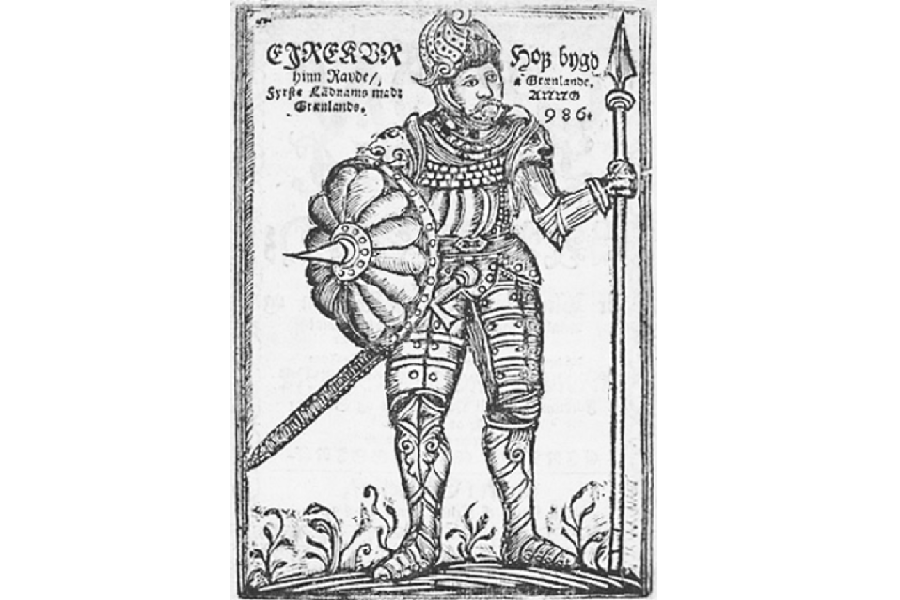
Ragnar Lothbrok may be the most famous, but in the contest for the most feared Viking, it’s hard to find a better choice than Erik the Red. Also known as Erik the Great, he is remembered – wrongly – as the first to discover Greenland. He was, however, the first to create a permanent Viking settlement there.
A History of Violence
Erik – whose full name was Erik Thorvaldsson – was born in Rogaland, Norway in about 950 C.E. He likely earned the nickname “the Red,” due to his red hair – but it applied equally to his temperament and propensity for violence.
His father, Thorvald Asvaldsson, was exiled when Erik was ten years old due to “a number of killings,” causing the family to leave Norway and settle in Hornstrandir in northern Iceland. Here, Erik would grow to manhood, marry, and build a homestead called Eriksstead in Hawksdale (a geothermally active valley in southern Iceland). He and his wife could have four children – a daughter (Freydis, who possibly had a different mother) and three sons (Leif, Thorvald, and Thorstein) – though, like his father before him, Erik’s inclination toward violence would soon upend his simple life.
Unneighborly Disputes
Some of Erik’s thralls (slaves) inadvertently caused a landslide on the property of a neighbor named Valthjof, causing a kinsman of Valthjof with the rather foreboding name Eyiolf the Foul to kill the slaves in response. Erik – being Erik – responded to this by killing Eyiolf and another man, Holmgang-Hrafn, causing him to be exiled from Hawksdale for three years, during which his family settled on the island of Oxney, off the coast of western Iceland.
But at Oxney, again, Erik’s temper got the better of him in a dispute over his setstokkr (large, rune-inscribed beams which held strong religious significance to Vikings). Erik had loaned the setstokkr to a neighbor named Thorgest, and in a dispute over their return Erik killed a number of men, including both Thorgest’s sons – and, again, Erik was exiled from his new home for three years.
The Green Land
Erik left Iceland, setting off west to Greenland. He was not the first – at least two prior Vikings had reached Greenland, with one even attempting (unsuccessfully) to settle it – but the area was still largely unknown in Erik’s time.
Erik spent his exile exploring the island – then called Gunnbjorn’s Skerry – and returned to Iceland armed with enough information (and the more appealing name “Green Land”) to rally a sizable party of settlers to return with him. In about 985 C.E., they established a colony near modern-day Qaqortoq that would endure into the 15th Century.
Erik himself lived until about 1000 B.C.E. when he died in an epidemic that ravaged the colony. His story survives through mentions in a number of Viking sagas, most notably the Saga of Erik the Red.
Leif Erikson

Erik the Red wasn’t just notable in his own right – he was the father of another of history’s most famous Vikings. His son, Leif would make his own sizable mark on Viking history.
Like his father, Leif would be credited with the discovery of a new land. Also like his father, this accreditation may be something of a half-truth – while Leif did conduct an expedition in the place he called Vinland (likely Newfoundland), there is evidence that it had been previously discovered by an Icelander named Bjarni Herjólfsson, who had been storm-driven there 15 years earlier and from whom Leif may have learned of its existence.
Breaks with Tradition
Leif, the second of Erik’s three sons, is believed to have been born sometime around the year 970 C.E., likely at his father’s farmstead in Hawksdale, and moved with the rest of his family to the Greenland settlement around the year 986.
There’s no indication Leif inherited his father’s and grandfather’s penchant for violence. On the contrary, Leif seems to have had something of a more thoughtful temperament – and as a result, his life was free of the murder-and-exile cycle of his forebears.
When he was of age, Leif traveled to Norway to swear loyalty to King Olaf Tryggvason. The dates of this are uncertain, but Tryggvason’s brief reign (995-1000 C.E.) narrows it down substantially. While in Norway, Leif would break another family tradition by siding with Tryggvason in the adoption of Christianity.
Man on a Mission
Either at the direction of King Olaf or on his own initiative, Leif set out for Greenland – by some accounts, with the deliberate intent of bringing Christianity to the island. In truth, though, it’s very possible it had already taken root there – there is a suspicious absence of any signs of heathen burial customs in Greenland, hinting that perhaps at least most of the settlers had been Christian well before Leif’s journey.
It was during this return journey that Leif found his way to a new land. Either driven by a storm like Herjólfsson or via deliberate expedition, Erikson came upon an icy land he called Helluland, which was either northern Labrador or Baffin Island. Next, he came to a forested area he called Markland (apparently also in Labrador) and finally to a fertile land he would call Vinland – which, based on archaeological evidence, seems to have been L’Anse aux Meadows in northern Newfoundland.
Unlike Greenland, the Vinland settlement didn’t last. A combination of conflict with the indigenous peoples, internal conflicts, and the sheer distance from the nearest support in Greenland all seem to have contributed to its premature abandonment.
Fortunate Son
Leif would remain in Vinland only for the first winter, after which he finally returned home to Greenland. Due to both his rescue of some shipwrecked fellow Vikings and the bounty of grapes and timber, he brought from Vinland, he earned the nickname Leif the Lucky.
Back in Greenland, he is said to have converted his mother and others to Christianity – though his father, Erik, would adhere to the old Norse gods for his whole life. And when his father died in the epidemic of 1000 C.E., Leif took over as the chieftain of Greenland – a role he held until at least 1019 and possibly as late as 1025.
Harald Bluetooth
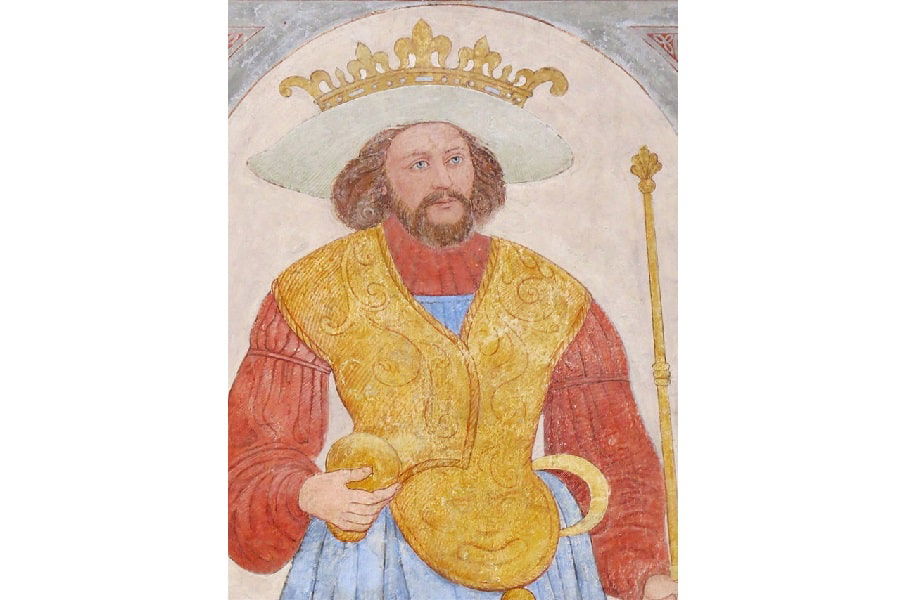
Technically, the Danish monarchy began around 936 C.E. with the ascension of Gorm the Old, who ruled over a sizable portion of Denmark’s main peninsula (Jutland). However, the full unification of Denmark, and its Christianization, happened under the reign of a more famous Viking king – his younger son, Harald Gormsson, aka, Harald Bluetooth.
Harald Bluetooth was born sometime around 928 C.E., in the town of Jelling (just northwest of Velje, Denmark), where his father had made his seat of power. His nickname seemed to derive from a conspicuous damaged tooth (the Old Norse word blátǫnn would have meant bluish-black or “dark colored), though it’s possible that in this case tan, or tooth, was a corruption of the Anglo-Saxon thegn, or thane – a rank of minor nobility.
In his youth, Harald and his older brother Canute took part in multiple raids in the British Isles. But his brother would fall to an ambush in Northumbria, leaving only Harald to inherit the throne when Gorm the Old died in 958.
READ MORE: Who Invented Bluetooth? Story of the Bit Bouncer
Father of His Country
As soon as he took the throne, Harald set out to complete his father’s work of unifying the country. Through both military and diplomatic means, he subjugated the smaller clans of the islands and outer coastal regions until the entire region was under his control.
To firm up his reign, he undertook a number of major defensive projects, notably the Trelleborg-type circular or “ring” forts that surround the city known today as Aarhus. He also refurbished and expanded the Danevirke, a series of fortifications that cross the neck of the Danish peninsula in what is today northern Germany.
The Christian King
Harald was not the first Christian king of Denmark – that would have been a predecessor, Harald Klak, who ruled in the early part of the 9th Century. He did, however, see Christianity spread to the country as a whole, and even claimed credit for the accomplishment on one of the Jelling stones, along with his unification of Denmark and later conquest of Norway.
Whether Harald’s own turn to Christianity was fully voluntary or coerced by Holy Roman Emperor Otto I is in question. The account given in Snorri Sturlson’s Heimskringla seems to hint at the latter – though it also describes a miracle performed by a cleric named Poppo, who carried a hot piece of iron in his hand unscathed, as inspiring Harald’s personal conversion – perhaps to give cover what was more a political than a religious decision.
A Surprising Legacy
In 1997, two engineers in Toronto, Canada – one from the technology giant Intel, one from Swedish telecommunications company Ericsson – were casually discussing the new technology being developed by a conglomerate of companies including their own, IBM, Nokia, and Toshiba. Both history buffs, the two discussed Harald Bluetooth’s unifying of Denmark and its parallels to this new technology’s goal of connecting multiple devices.
Pondering possible names for it, the two fell upon “Bluetooth”, which initially served simply as the code name during development, but ultimately became the official name when it was launched in 1998. And Harald’s inspiration is reflected in the Bluetooth icon as well as its name – the symbol is a combination of the Nordic runes for “H” (Hagall) and “B” (Bjarkan) – Harald Bluetooth’s initials.
Cnut the Great
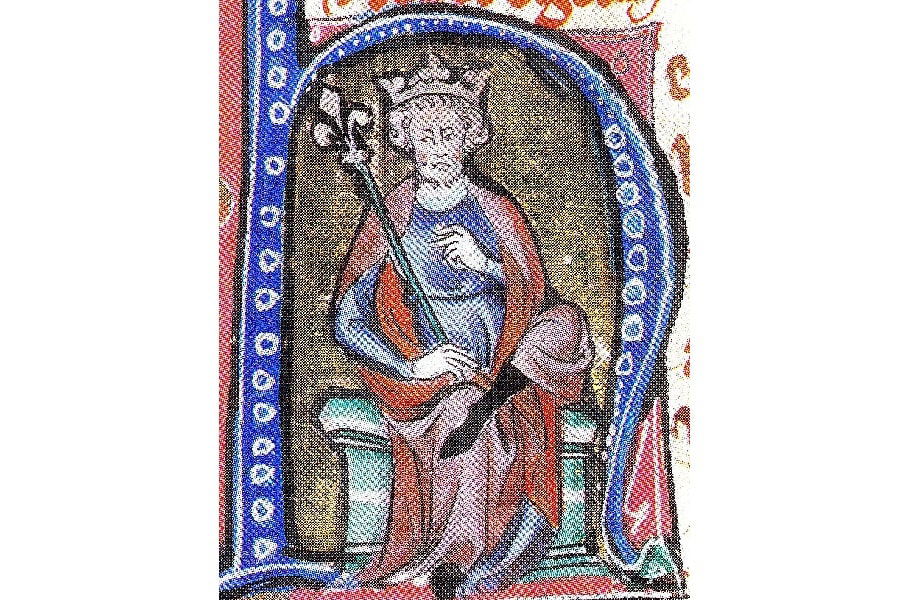
With clans ruling territory stretching from modern-day Russia to the British Isles and beyond, there are many famous Viking kings. None, however, were as great as Cnut (also called Canute).
The son of Sweyn Forkbeard, who was, in turn, the son of Danish king Harald Bluetooth, Cnut’s precise date and place of birth are unknown. What is known is that he joined his father in an invasion of England in 1013.
The English Throne
Sweyn succeeded in taking the throne of England from Aethelred the Unready but died shortly thereafter. In the resulting power vacuum, Aethelred moved to take back his throne, and Cnut – sizing up his chances – retreated to Denmark to build up his forces, returning in 1015.
A year of military conflicts ended in a power-sharing agreement between Cnut and Aethelred’s son Edmund II. That ended near the end of 1016 when Edmund died leaving Cnut as the sole ruler of England.
Despite his somewhat ruthless methods in securing power, Cnut seems to have been a successful king. He took the best of his English predecessor’s legal codes, strengthened the currency, and in general ruled wisely.
The Danish Throne
In 1018, Cnut’s younger brother, King Harald II of Denmark, died. Eager to expand his power – and to better secure England from attack – Cnut journeyed to Denmark to assert his claim to the throne. Buttressed by English forces, he overcame minor Danish resistance and by 1020 he returned to England, his hold on the Danish throne secure.
But threats to this stability came quickly. In 1022, when Olof Skötkonung, King of Sweden, died, his son Anund Jacob took the throne – and, eager to maintain the balance of power in the region, formed alliances with Norway to act as a counter to Cnut, with the allies almost immediately beginning a series of attacks on Denmark.
Taking Norway
In response to the provocations of the Scandinavian kings, Cnut set out from England once again. He and his forces met the Swedish and Norwegian armies in about 1026, at the mouth of a river called Helgeå
There were actually two rivers by that name, one in the Upplands of Sweden, and another in east Scania in modern-day Denmark (though it was in Swedish territory in Cnut’s day). Given the descriptions given by Snorri Sturluson in the Saga of Olaf Haraldson (and the dominance Cnut displayed over the region in the aftermath) the Upplands location seems the more likely of the two.
Cnut also initiated a program of bribes and political intrigue, and by 1028 he was officially crowned king of Norway, deposing Olaf Haraldsson and making Cnut ruler of an impressive swath of the region. While it was referred to in its time only by its individual kingdoms, in the modern age historians have dubbed it the North Sea Empire.
The End of the Empire
By 1033, this Viking empire was already beginning to fray. His regent in Norway, his son Svein, had been driven from Trondheim, with Olaf’s young son Magnus taking territory as they retreated. By 1035, Norway was entirely lost.
Cnut had previously granted the throne of Denmark to another son, Harthacnut (a sign to most historians that Cnut had not intended to create an enduring empire), who held onto it after Cnut died – just weeks after the loss of Norway. The English throne went through a brief political contention between Harthacnut and another son, Harold, eventually resulting in Harold being installed as regent – though by 1037 he was officially recognized as King Harold I, dissolving Cnut the Great’s ephemeral empire once and for all.
Harald Hardrada
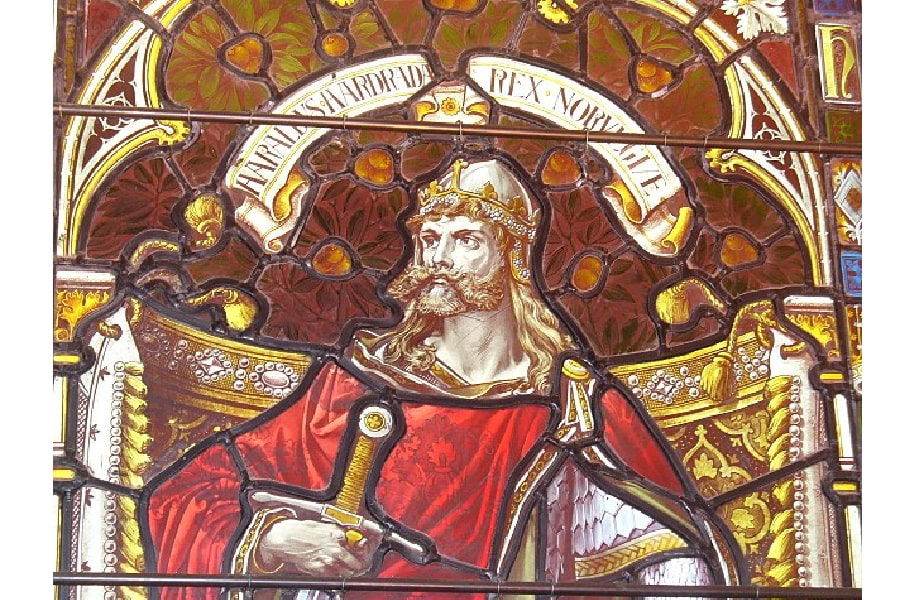
Harald Sigurdsson was born about 1015 C.E. in Ringerike, Norway. He was the youngest of three half-brothers – sons of Sigurd Syr, a powerful king in Norway’s Uplands said to be descended from Norwegian Harald Fairhair, the legendary king who had first united the various fiefdoms of Norway.
His oldest half-brother, Olaf, managed to unite a great deal of Norway himself before being deposed by Danish King Cnut the Great and being sent into exile in Kievan Rus (in modern Russia). But just a few years later, he returned with an army in an attempt to retake the throne, this time with his younger half-brother, then 15, joining him.
Harald: The Exile
The battle went badly for the Sigurdsson brothers – Olaf was killed and Harald badly wounded, barely managing to escape to eastern Norway to heal before traveling on to Keivan Rus. Grand Prince Yaroslav welcomed Harald warmly as he had his brother and made him a captain in his forces.
For a few years, Harald served Yaroslav, likely fighting Poles, Chudes (Finno-Ugric peoples of northwest Russia), and Pechenegs (Turkic peoples from Central Asia). But about 1033 or 1034, Harald left the Grand Prince to serve a more powerful ruler – the Byzantine Emperor.
The Varangian Guard and Return from Exile
Harald and his men headed to Constantinople and joined the Varangian Guard, an elite unit of the Byzantine military which often recruited Norsemen. Ostensibly the Emperor’s bodyguard, the Varangian Guard still took Harald to the Mediterranean, Mesopotamia, and even Jerusalem.
A favorite of Emperor Michael IV, Harald quickly rose to lead the entire Varangian Guard – though his successor, Michael V, viewed Harald far less favorably, causing Harald to return north to the Grand Prince. Now more experienced and far, far richer, he married Yaroslav’s daughter Ellisif, headed west, bought a ship, and sailed to Sweden sometime around 1045.
King at Last
At the time of Harald’s return, his nephew Magnus the Good held the thrones of Norway and Denmark. To depose him Harald allied himself with the deposed Danish ruler, Sweyn Estridsson, and Sweden’s King Anand Jacob.
But Magnus brokered an alliance of his own in lieu of war, making Harald co-ruler of Norway and heir to the Norwegian throne. The arrangement held, with the two co-rulers avoiding each other almost entirely. And when Magnus died within the year, Harald was, finally, king of Norway.
This may be when he earned his nickname, Hardrada (“hard ruler”), though it may be a mistranslation. Some accounts give him the nickname hárfagri (“beautiful hair”), and there has even been speculation that he was Harald Fairhair, and the earlier king supposedly by that name didn’t exist – at least not as described in the sagas.
The Last Viking
Harald ruled until 1066, when Edward the Confessor, king of now-unified England, died. Harald (due to an agreement with a previous Viking king of England) was one of four claimants to the throne along with William of Normandy, Edward’s brother-in-law Harold Godwinson, and an Anglo-Saxon prince named Edgar Atheling.
Harald invaded England from the north, expecting only light resistance, but encountered Harold Godwinson’s army instead. He was felled by an arrow and his army vanquished, the defeat marking the last Viking raid of any sort into England and earning Harald the epithet of the Last Viking.
Honorable Mentions
While these may be, arguably, some of history’s most famous Vikings, there are a number of others that are worth noting as well. Their accomplishments or fame may not rise to the level of those listed above, but their names were still important in their time – and, more importantly, still echo down to today.
Ivar the Boneless
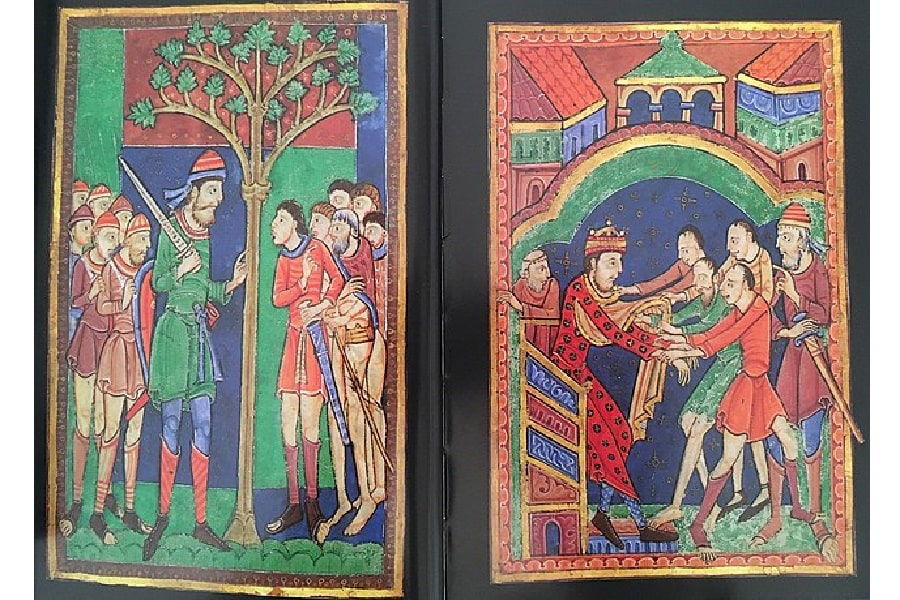
The son of Ragnar Lothbrok, Ivar was born sometime in the early 9th Century. Believed to have been afflicted with some disability – perhaps the so-called “brittle bone disease” – from which his nickname derives, he was nonetheless thought to be a fierce and skilled tactician.
He was one of the leaders of what was called the Great Heathen Army, which invaded England in 865 in retribution for the execution of Ragnar Lothbrok and conquered Northumbria, Mercia, Kent, Essex, East Anglia, and Sussex, leaving only Wessex not under Viking control. Ivar is possibly synonymous with an “Imar,” who held Dublin during this same time, and in any case, seems to have described himself as king of the Norsemen of all Ireland and Britain.
Bjorn Ironside
Another son of Ragnar Lothbrok, Bjorn Ironside was a highly successful Viking commander. He raided France and England and took part in the Great Heathen Army led by his brother Ivar. Later, he undertook an ambitious expedition to the Mediterranean, raiding southern France, Northern Africa, Sicily, and Italy.
In the aftermath of his Mediterranean excursion, Bjorn – now exceedingly rich – returned home to Scandinavia. He either took or was granted the Uppsala area of Sweden and ruled as king until his death – supposedly founding the Munsö dynasty, the earliest known royal dynasty in Sweden which dates back to the Viking Age.
Freydís Eiríksdóttir
The child of a different famous Viking, Freydis was the daughter of Erik the Red, and the sister of Leif Erikson. Accounts of her seem to show that, unlike her famous brother, she inherited her father’s fearsome nature.
Legend says that, when her party was attacked by indigenous people in Vinland, Freydis grabbed a fallen Viking’s sword and beat it against her own breast, giving such a terrible war cry that the enemy fled (and she was, in the account, eight months pregnant at the time). Later, she and another group of Vikings had a falling out, she urged her husband to kill them all by falsely claiming they attacked her – and then, when her husband stopped after only killing the men of their camp, slaughtered the women herself (an act for which she was later shunned).
Eric Bloodaxe

One of the sons of the Norwegian King Harald Fairhair, Eric Bloodaxe took part in savage, bloody raids from the time he was only twelve years old. But his nickname came not from his propensity for violence in raids – though that was undeniable – but from something much closer to home. He secured ascension to his father’s throne by murdering five of his brothers (which also earned him the alternate nickname, “Brother-Slayer”).
Historical information about Eric is sparse, though it is known that he ruled Norway from 932 to 934, and later ruled Northumbria in modern-day England in two separate, short spans. He would be murdered himself in turn, by an agent of Oswulf, ruler of Bamburgh in Northumbria.
Gunnar Hamundarson
Another contender for the most famous Viking warrior, Gunnar lived in Iceland sometime in the 10th Century. As described in the Njáls Saga, he was an imposing fighter who wielded an atgeir (a long-handled weapon not unlike a halberd) and was said to be able to jump to his own height in full armor.
Yet for all his martial skill, he preferred peace to conflict. Described as handsome, wise, poetic, and mild-mannered, he fits the popular image of a knight perhaps more than that of a Viking. All the same, his story ended in violence when he was finally taken down by a band of men seeking revenge for Gunnar’s killing of their family members.
Berserkers and Wolfskins
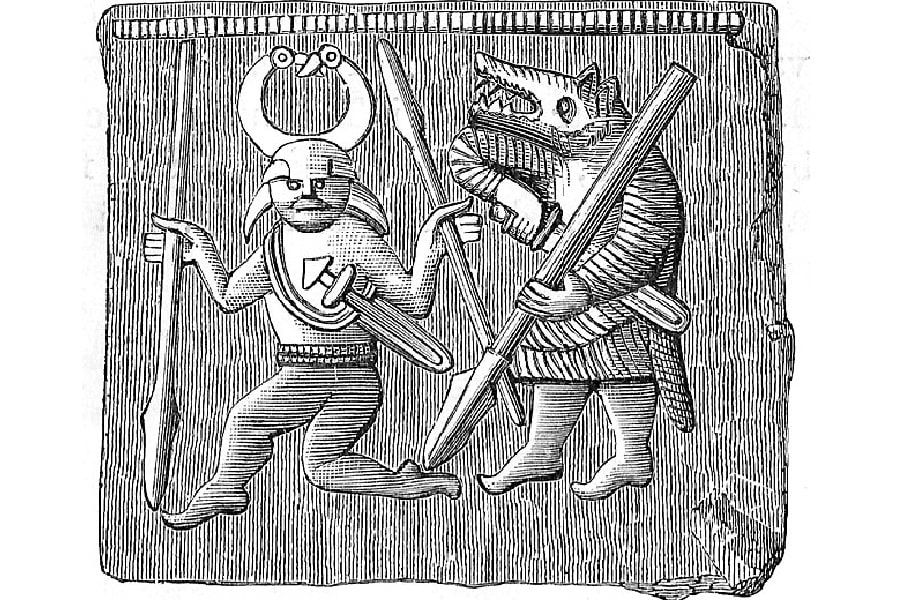
Beyond famous individuals, any list of famous Vikings has to make note of the fearsome warriors known as Berserkers and their lesser-known counterparts the Wolfskins. And while few of them stand out as individuals (apart from exceptions like the Berserker Egil Skallagrimsson), as groups they remain popular and recognizable parts of Viking culture.
The Berserkers, known in Old Norse as berserkir (or literally, “bear-shirts”), were warriors who placed themselves in a kind of ecstatic trance when they entered the battle. Eschewing armor and shields, Berserkers attacked in a fearless, frenzied rage.
The Wolfskins were similar though the more obscure group called the Ulfhednar in Old Norse, but were very similar in aspect. Like the Berserkers, they were shamanistic warriors dedicated to their chosen animal totem, depicted as wearing its skin into battle (and often nothing else), and said to enter an animalistic blood lust in which they would bite, howl, and slaughter men with wild fury.